Jim Crow Museum
1010 Campus Drive
Big Rapids, MI 49307
[email protected]
(231) 591-5873
One of the most common questions to the staff at the Jim Crow Museum is, “Do you have a traveling exhibit?” The answer is yes; we have three. All three are unique, all are various sizes, and all offer different experiences. Overcoming Hateful Things: Stories from the Jim Crow Museum, Time of Change, and Them: Images of Separation are our current three traveling exhibitions.
The most recently curated exhibition, Overcoming Hateful Things: Stories from the Jim Crow Museum, could be categorized as a traveling museum. The exhibition requires a minimum of 3,000 square feet for display and is better suited for museums and large space venues. The exhibition is ideally supported and managed by venue staff or local volunteers. Overcoming Hateful Things features 151 objects and eight multimedia interactives, including guides for educators and visitors. The exhibition explores the Jim Crow system, the African American experience through the Jim Crow era, and the legacies of this system in modern society. Moreover, the Overcoming Hateful Things exhibition acquaints viewers with African American pushback through activism, achievement, and living with dignity in their daily lives. For more information about the exhibit and booking, please see the Overcoming Hateful Things exhibit website. https://jimcrowmuseum.ferris.edu/hatefulthings/index.htm
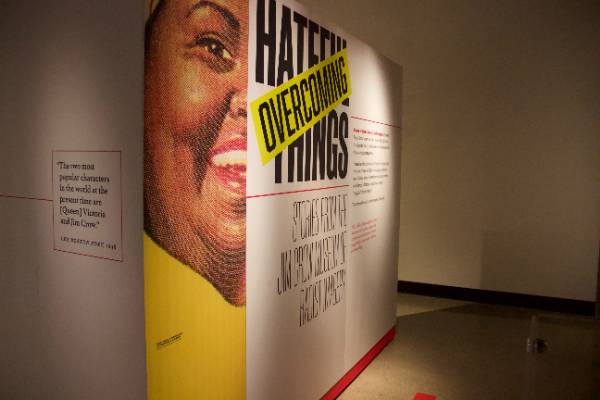
Entrance wall of the traveling museum Overcoming Hateful Things: Stories from the Jim Crow Museum.

Jim Crow is Public Space is just one of the exhibit areas in Overcoming Hateful Things traveling museum.
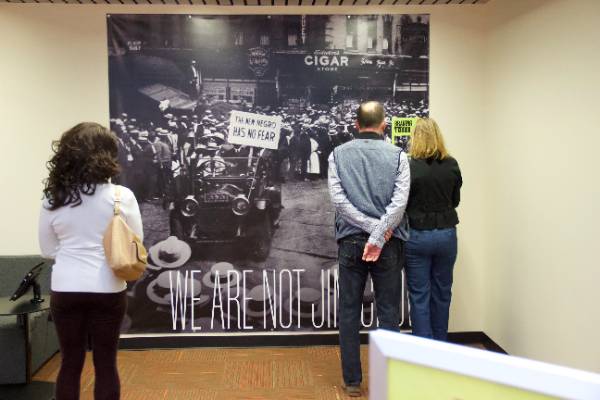
"We are not Jim Crow" imagery illustrates the pushback of African Americans to the Jim Crow system.
Time of Change exhibition consists of 30 photographs by Bruce Davidson that capture the struggle for justice and equality during a time of Freedom Rides, protests, marches, and police violence of the 1960s. The exhibit also includes 15 photographs by recent photographers taken at Black Lives Matter (BLM) protests in New York City, New York; Los Angeles, California; Cleveland, Ohio; Selma, Alabama; Big Rapids, Michigan; and Amsterdam, Holland. The images capture a fierce commitment to confronting racial injustice and repairing this world through activism. The Time of Change exhibit is the smallest of our traveling exhibitions a minimum of 100 feet of linear wall space. For more information about the exhibit and booking, please see the Time of Change exhibit website. https://jimcrowmuseum.ferris.edu/davidsonexhibit/index.htm
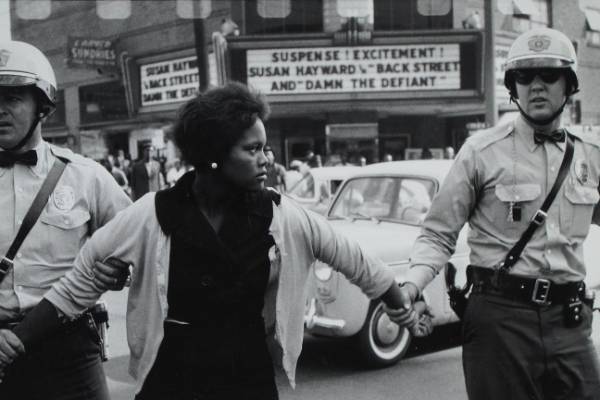
A photo from the Bruce Davidson collection is one of many in this exhibit that explore the Fight for Freedom during the 1960s.
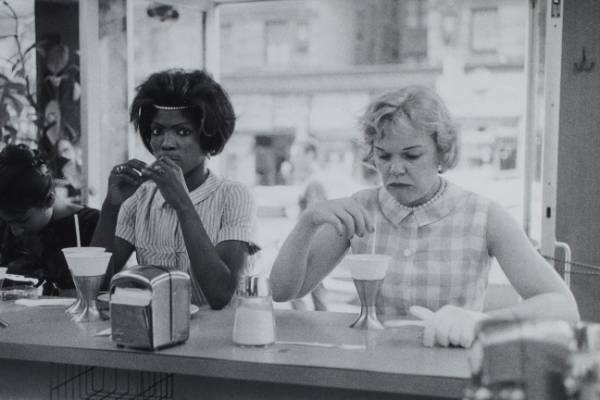
Jim Crow practices were alive and well in Northern cities during the Jim Crow period. A photo from the Bruce Davidson collection.

Photographers from many cities captured Black Lives Matter protests and clashes. Eleven photographers are featured in this section of the exhibit.
Them: Images of Separation, was created in 2005 and has traveled to various locations across Michigan and numerous states in its 19 years of existence. In THEM: Images of Separation, the Jim Crow took its direction from Martin Luther King's famous quote, 'Injustice anywhere is a threat to justice everywhere.' THEM: Images of Separation, is a traveling exhibition that showcases items from popular culture used to stereotype different groups. The negative imagery -- found on postcards, license plates, games, souvenirs and costumes -- promoted stereotyping against such groups as Asian-Americans, Hispanics, Jews and poor whites, as well as those who are "other" in terms of body type or sexual orientation. The exhibition includes 38 pieces and didactic panels. For more information about the exhibit and booking, please see the Them: Images of Separation exhibit website. https://jimcrowmuseum.ferris.edu/traveling2/index.htm
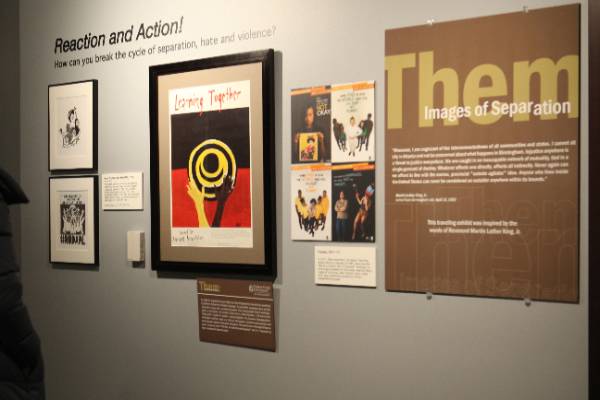
THEM: Images of Separation, is a traveling exhibition that showcases items from popular culture used to stereotype different groups. Above image from the exhibit on display at the Arab American National Museum.
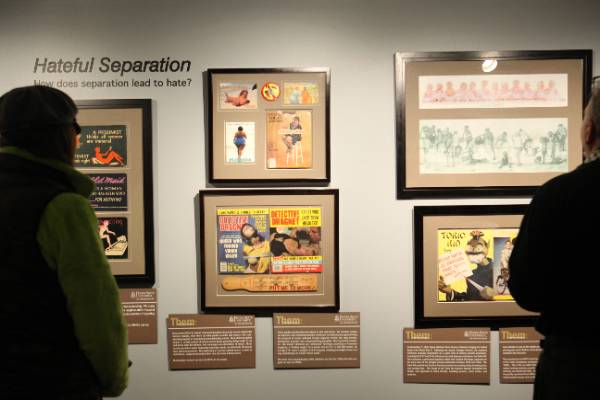
The negative imagery -- found on postcards, license plates, games, souvenirs and costumes
-- promoted stereotyping against such groups as Asian-Americans, Hispanics, Jews and
poor whites, as well as those who are "other" in terms of body type or sexual orientation.
Above image from the exhibit on display at the Arab American National Museum.
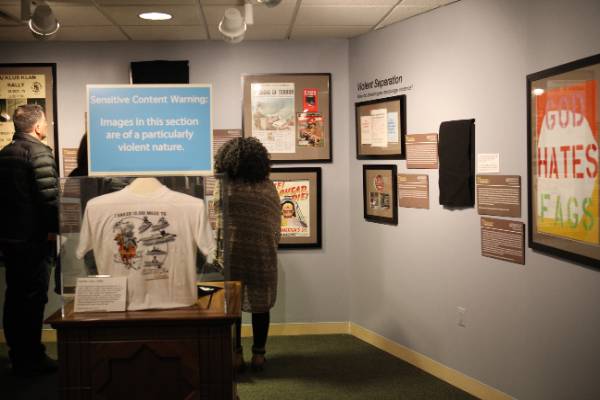
For this show, we took our direction from Martin Luther King's famous quote, 'Injustice
anywhere is a threat to justice everywhere.' This is the next logical step for the
Jim Crow Museum.
Above image from the exhibit on display at the Arab American National Museum.